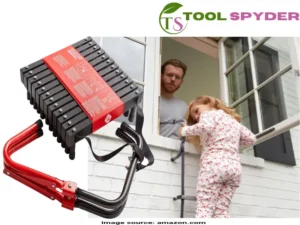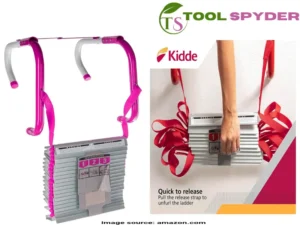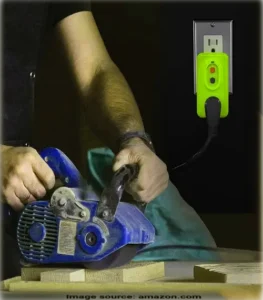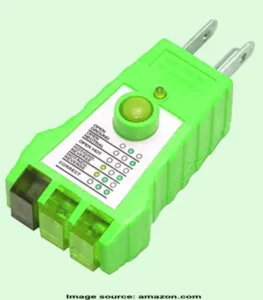Understanding the house inspection cost in the USA is crucial for anyone involved in the real estate market, whether you’re buying, selling, or maintaining a property. A house inspection provides a thorough assessment of a property’s condition, identifying potential issues. It could affect its value or safety. This process is an essential step. It can influence your financial decisions and negotiate terms, making it imperative to comprehend the associated expenses. The house inspection cost can vary significantly based on several factors, including the property’s size, location, and age.
- For prospective buyers, a detailed inspection can reveal hidden problems that might require costly repairs.
- Sellers, on the other hand, can use an inspection report to address issues before listing the property, potentially increasing its market value.
- Even homeowners who are not currently in the market can benefit from regular inspections to maintain their property’s condition and avoid unexpected repair bills.
In this comprehensive guide, we will explore the various components that contribute to house inspection costs, helping you make informed decisions. In this article we try to cover all the necessary information about a Home inspection costs or charges in USA.
TABLE OF CONTENT:
- 1. State-Wise Pricing for House Inspections
- 2. A comparative chart for Home inspection cost of every state
- 3. Preparation Tips before a House Inspection
- 4. Mandatory Requirements for House Inspections
- 5. Expenses Involved in Pre-Listing House Inspection Cost
- 6. Key Areas House Inspectors Assess
- 7. Average Cost of House Inspections Based on House Size
- 8. House Inspection Costs Depending on House Type
- 9. Cost of Inspecting New Construction Houses
- 10. What to Expect in a House Inspection Report
- 11. Guidelines for Selecting a House Inspector
- 12. Fees Charged by House Inspectors
- 13. Pricing for Thermal Imaging Inspections
- 14. House Inspection Costs for VA Loans
- 15. Actions to Take After Completing a House Inspection
- 16. Responsibility for Repairs Post-House Inspection
- 17. Common Repairs Following a House Inspection
- 18. Certification Requirements for House Inspectors
- 19. Differences between Four-Point and Comprehensive House Inspections
- 20. FAQs
- What is the average cost of a house inspection in the USA?
- What factors affect the pricing of a house inspection?
- How can I find a good house inspector?
- Are house inspections mandatory?
- What does a standard house inspection include?
- How long does a house inspection take?
- Can I attend the house inspection?
- Final Thoughts
1. State-Wise Pricing for House Inspections
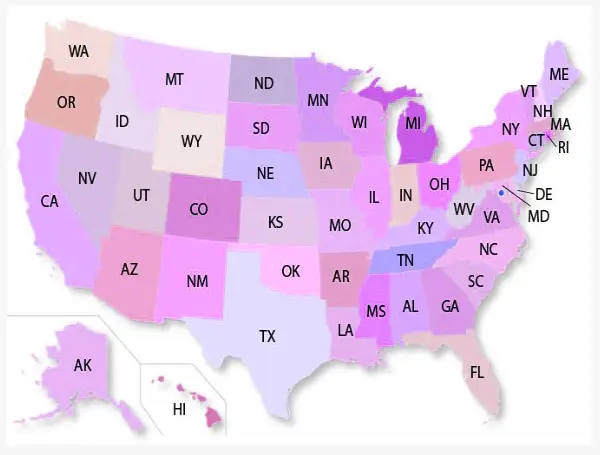
House inspection costs in the USA vary significantly from one state to another, influenced by a range of factors including local regulations, demand, and the cost of living. For instance, in states such as California and New York, where the cost of living is high, house inspection fees also tend to be on the higher side.
- Conversely, in states with a lower cost of living such as Ohio or Alabama, house inspections are generally more affordable, typically ranging from $250 to $350. The lower demand and less stringent regulatory requirements contribute to the reduced costs in these regions. For example, in Ohio, local inspectors might charge around $300 for a standard house inspection, which covers all essential areas including structural components, roofing, electrical systems, and plumbing.
- In the Midwest, states like Illinois and Michigan have moderate inspection fees, usually between $300 and $450. This middle range reflects a balanced combination of moderate living costs and a steady demand for house inspections. Local regulations in these states are stringent enough to ensure thorough inspections but not as taxing as those in high-cost states like California.
- Interestingly, coastal states such as Florida and Texas also show a varied pricing structure due to their diverse economic landscapes. In Florida, the cost of a house inspection can range from $350 to $500, driven by the high demand in metropolitan areas like Miami. On the other hand, Texas presents a broader range, from $300 to $450, reflecting both urban and rural inspection demands.
2. A comparative chart for Home inspection cost of every state
| Sl | Code | State | State Capital | Cost |
| 1 | AL | Alabama | Montgomery | $325 – $450 |
| 2 | AK | Alaska | Juneau | $350 – $450 |
| 3 | AZ | Arizona | Phoenix | $350 – $425 |
| 4 | AR | Arkansas | Little Rock | $375 – $475 |
| 5 | CA | California | Sacramento | $325 – $450 |
| 6 | CO | Colorado | Denver | $375 – $525 |
| 7 | CT | Connecticut | Hartford | $325 – $400 |
| 8 | DE | Delaware | Dover | $350 – $425 |
| 9 | FL | Florida | Tallahassee | $325 – $425 |
| 10 | GA | Georgia | Atlanta | $325 – $400 |
| 11 | HI | Hawaii | Honolulu | $350 – $450 |
| 12 | ID | Idaho | Boise | $425 – $550 |
| 13 | IL | Illinois | Springfield | $350 – $425 |
| 14 | IN | Indiana | Indianapolis | $350 – $425 |
| 15 | IA | Iowa | Des Moines | $350 – $425 |
| 16 | KS | Kansas | Topeka | $350 – $425 |
| 17 | KY | Kentucky | Frankfort | $300 – $375 |
| 18 | LA | Louisiana | Baton Rouge | $425 – $475 |
| 19 | ME | Maine | Augusta | $350 – $475 |
| 20 | MD | Maryland | Annapolis | $325 – $425 |
| 21 | MA | Massachusetts | Boston | $350 – $450 |
| 22 | MI | Michigan | Lansing | $300 – $350 |
| 23 | MN | Minnesota | Saint Paul | $375 – $475 |
| 24 | MS | Mississippi | Jackson | $375 – $425 |
| 25 | MO | Missouri | Jefferson City | $325 – $400 |
| 26 | MT | Montana | Helena | $350 – $450 |
| 27 | NE | Nebraska | Lincoln | $350 – $450 |
| 28 | NV | Nevada | Carson City | $325 – $400 |
| 29 | NH | New Hampshire | Concord | $350 – $450 |
| 30 | NJ | New Jersey | Trenton | $400 – $600 |
| 31 | NM | New Mexico | Santa Fe | $450 – $500 |
| 32 | NY | New York | Albany | $350 – $450 |
| 33 | NC | North Carolina | Raleigh | $325 – $425 |
| 34 | ND | North Dakota | Bismarck | $350 – $450 |
| 35 | OH | Ohio | Columbus | $325 – $375 |
| 36 | OK | Oklahoma | Oklahoma City | $400 – $475 |
| 37 | OR | Oregon | Salem | $425 – $550 |
| 38 | PA | Pennsylvania | Harrisburg | $350 – $425 |
| 39 | RI | Rhode Island | Providence | $400 – $450 |
| 40 | SC | South Carolina | Columbia | $275 – $400 |
| 41 | SD | South Dakota | Pierre | $350 – $450 |
| 42 | TN | Tennessee | Nashville | $400 – $475 |
| 43 | TX | Texas | Austin | $375 – $475 |
| 44 | UT | Utah | Salt Lake City | $375 – $450 |
| 45 | VT | Vermont | Montpelier | $350 – $450 |
| 46 | VA | Virginia | Richmond | $325 – $400 |
| 47 | WA | Washington | Olympia | $425 – $600 |
| 48 | WV | West Virginia | Charleston | $350 – $450 |
| 49 | WI | Wisconsin | Madison | $325 – $375 |
| 50 | WY | Wyoming | Cheyenne | $350 – $450 |
Overall, location plays a crucial role in determining house inspection costs across the USA. Understanding these regional variations can help homeowners and buyers budget more effectively for their house inspection needs.
3. Preparation Tips before a House Inspection
Preparing for a house inspection is a critical step for both homeowners and potential buyers. Because it can significantly influence the outcome and, consequently, the overall house inspection cost. A good preparation ensures a smoother inspection process. Moreover It can potentially highlight the property’s strengths while minimizing any negative findings.
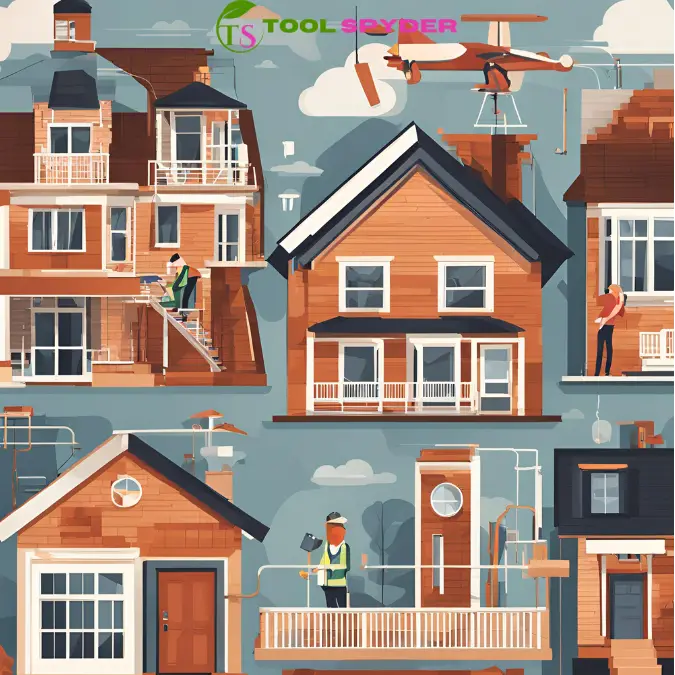
- Clean before house inspection: Firstly, cleanliness is paramount. A clean property not only creates a positive impression but also allows the inspector to navigate the premises more efficiently. Homeowners should focus on cleaning every corner of the house, paying special attention to kitchens, bathrooms, and basements. Decluttering spaces is equally important as it facilitates easy access to various parts of the home.
- Making necessary repairs: Next, making necessary repairs before the inspection can prevent minor issues from being flagged as major concerns. Addressing small repairs, such as fixing leaky faucets, replacing broken windows, or patching up holes in walls, can significantly improve the inspection report. These minor enhancements can be cost-effective and may prevent the need for re-inspection, which would otherwise add to the house inspection cost.
- Easy access to all areas: Ensuring easy access to all areas of the home is another crucial preparation step. Inspectors need to evaluate every part of the property, including attics, basements, garages, and crawl spaces. Homeowners should ensure that these areas are not obstructed and that all doors, including those to utility rooms and electrical panels, are unlocked. By providing unobstructed access, the inspection can proceed without unnecessary delays.
- Inspection’s outcome: Preparation can indeed impact the inspection’s outcome. A well-maintained home is likely to receive a more favorable report, which can positively influence the property’s market value. Moreover, a smooth inspection process without delays or re-inspections can help keep the house inspection cost within budget. By taking these preparatory steps seriously, homeowners and buyers can contribute to a more efficient and effective house inspection.
4. Mandatory Requirements for House Inspections
House inspections in the USA are governed by a variety of mandatory requirements that ensure safety, integrity, and compliance with state and federal regulations. These requirements often serve as a baseline for inspectors, guaranteeing that every inspection follows a standardized procedure. The adherence to these guidelines can significantly impact the overall cost of a house inspection.
- Inspector’s certification and license: One of the primary legal requirements for house inspections involves the inspector’s certification and licensing. Inspectors must be credentialed by a recognized body, such as the American Society of Home Inspectors (ASHI) or the International Association of Certified Home Inspectors (InterNACHI). Certification ensures that inspectors are equipped with the necessary knowledge and skills, thereby adding a layer of reliability to the service provided.
- State regulations: State regulations also play a crucial role in defining the scope and depth of house inspections. Each state in the USA has its own set of specific criteria that inspectors must follow. For instance, states like California and Texas have stringent guidelines that include checking for seismic resilience and pest infestations. These additional checks often translate into higher inspection costs due to the extended time and specialized expertise required.
- Consider requirements: It is also essential to consider that mandatory requirements can vary significantly depending on the type of property being inspected. For example, older homes may necessitate more detailed inspections to account for outdated building codes and potential hazards, thereby increasing the overall cost. Conversely, newer constructions might have fewer mandatory requirements, resulting in a relatively lower inspection fee.
Understanding these mandatory requirements is crucial for homeowners and prospective buyers alike. It helps in anticipating the potential costs involved and ensures that the property in question meets all safety and legal standards, ultimately safeguarding the investment.
5. Expenses Involved in Pre-Listing House Inspection Cost
Pre-listing house inspections have become an integral step for many sellers aiming to secure a favorable sale price. A pre-listing inspection is conducted before putting a house on the market, allowing sellers to identify and address potential issues proactively. This not only provides transparency to prospective buyers but can also expedite the sale process by reducing the likelihood of last-minute negotiations or deal-breakers.

- The cost of a pre-listing inspection can vary significantly based on several factors, including the size and age of the property, its location, and the extent of the inspection required. On average, homeowners can expect to spend between $300 and $500 for a comprehensive pre-listing inspection. However, for larger or older homes, the cost could rise to $1000 or more.
- The expenses involved in a pre-listing inspection typically cover a range of services. A standard inspection usually includes an evaluation of the home’s structural components, electrical systems, plumbing, HVAC systems, roof, and foundation. Some inspections may also encompass additional checks for pest infestations, mold, and radon, which could incur additional costs. Each of these components is critically assessed to ensure they meet safety and operational standards.
- Beyond the direct costs of the inspection itself, sellers may also need to budget for follow-up expenses. If the inspection uncovers significant issues, addressing these problems before listing the house can help in presenting the property in its best condition and potentially increasing its market value. These repair costs can vary widely but are a crucial consideration for sellers aiming to achieve a higher final sale price.
In summary, while the upfront costs of a pre-listing house inspection may seem substantial, the benefits often outweigh the expenditures. Sellers can gain a clearer understanding of their property’s condition, enhance buyer confidence, and ultimately secure a more favorable sale price. By investing in a thorough pre-listing inspection, homeowners can navigate the selling process with greater confidence and efficiency.
6. Key Areas House Inspectors Assess
House inspectors play a crucial role in evaluating the overall condition of a property, ensuring it is safe and up to code. A comprehensive house inspection encompasses several key areas, each requiring a detailed assessment to identify any potential issues. The thoroughness of these assessments can significantly influence the cost of the inspection.

- One of the primary areas inspectors examine is the foundation. A solid foundation is essential for the structural integrity of a home. Inspectors look for signs of cracking, settling, or other damage that could indicate underlying problems. Any issues found here can lead to costly repairs, making this a critical area of focus.
- The roof is another vital component inspected. Inspectors check for missing shingles, leaks, and the overall condition of the roofing materials. A well-maintained roof protects the home from weather-related damage and energy loss. The cost of inspection may rise if the inspector needs to access difficult-to-reach areas or if specialized equipment is required.
- Heating, ventilation, and air conditioning (HVAC) systems are also thoroughly assessed. Inspectors ensure that these systems are functioning efficiently and safely. They check for proper installation, maintenance history, and any signs of wear or damage. Given the complexity and importance of HVAC systems, their evaluation can add to the overall inspection cost.
- Plumbing systems are another focal point. Inspectors examine pipes, fixtures, and water heaters for leaks, corrosion, and proper operation. Water damage and plumbing issues can lead to significant repair costs, making this a crucial aspect of the inspection.
- Electrical systems are scrutinized to ensure safety and compliance with current codes. Inspectors check the condition of wiring, outlets, and panel boxes. Faulty electrical systems can pose serious fire hazards, so this part of the inspection is both detailed and essential.
- Additional areas of assessment may include insulation, windows, doors, and the overall structural integrity of the home. Each of these elements contributes to the comprehensive nature of a house inspection, and the thoroughness with which they are evaluated can impact the total cost.
In conclusion, the cost of a house inspection is influenced by the meticulous examination of key areas such as the foundation, roof, HVAC systems, plumbing, and electrical systems. The more thorough the inspection, the higher the potential cost, reflecting the critical nature of these assessments in ensuring a home’s safety and longevity.
7. Average Cost of House Inspections Based on House Size
When considering the cost of house inspections in the USA, one of the most significant factors influencing the price is the size of the property. The average cost of a home inspection can vary widely based on the square footage and specific characteristics of the house. Here, we offer a detailed breakdown of how house size impacts the overall cost, supported by data and statistics.
- For small homes, typically those under 1,000 square feet, the average inspection cost ranges from $200 to $300. These smaller properties require less time to inspect, resulting in lower overall costs. Inspectors can generally complete their evaluation quicker, which translates to a more affordable fee for the homeowner.
- Medium-sized homes, which generally fall between 1,000 and 2,000 square feet, see a moderate increase in inspection costs. On average, homeowners can expect to pay between $300 and $400 for a thorough inspection. The added square footage means more systems and structures to evaluate, necessitating more time and effort from the inspector.
- For large homes, typically those exceeding 2,000 square feet, the cost of an inspection can range from $400 to $600 or more. These properties often feature more complex systems and additional rooms, requiring a meticulous and extended inspection process. Additionally, larger homes may include extra features such as pools, detached garages, or extensive landscaping, all of which contribute to the higher cost.
- It’s important to note that these figures are averages and actual prices can vary based on regional differences, the experience and qualifications of the inspector, and the specific details of the property. However, understanding these general cost ranges can help homeowners budget accordingly and make informed decisions when scheduling a house inspection.
In summary, the size of a home plays a crucial role in determining the cost of a house inspection. By knowing what to expect based on the square footage of their property, homeowners can better plan for this essential part of the home-buying or home-maintenance process.
8. House Inspection Costs Depending on House Type
When considering house inspection costs in the USA, the type of residence plays a significant role in determining the overall expense. Various factors, such as size, complexity, and specific inspection requirements, contribute to the differences in cost between single-family homes, condos, and townhouses.
- For single-family homes, inspection costs are generally higher due to the larger size and more extensive inspection areas. Inspectors must evaluate multiple components, including the roof, exterior, foundation, electrical systems, plumbing, and HVAC systems. The comprehensive nature of these inspections typically results in a cost range of $300 to $500, although larger or more complex properties may incur higher fees.
- Condos, on the other hand, often have lower inspection costs. This is primarily because the inspection is limited to the interior of the unit, as common areas and external structures are usually maintained by the homeowner’s association (HOA). As a result, inspection costs for condos generally range from $200 to $400. However, buyers should be aware of additional fees that might arise from inspecting shared facilities or amenities, which can vary based on the condo’s specific features and the HOA’s policies.
- Townhouses represent a middle ground between single-family homes and condos. While inspectors need to assess both the interior and some aspects of the exterior, the scope is not as extensive as that of a single-family home. Consequently, townhouse inspections typically cost between $250 and $450. Factors such as shared walls and limited exterior responsibilities (often managed by an HOA) can influence the final cost.
Specific factors that might influence the cost of a house inspection include the age of the property, its location, and any additional inspection services required. For instance, older homes may necessitate more thorough evaluations, and properties in regions prone to specific environmental hazards (e.g., radon, termites) might require specialized inspections that further impact the overall cost.
9. Cost of Inspecting New Construction Houses
When it comes to inspecting newly constructed houses, the costs can vary significantly depending on numerous factors. Typically, the cost of inspecting new construction houses ranges from $300 to $500. This is often slightly lower than the cost for inspecting older homes, primarily because new builds generally have fewer issues to uncover. However, the price can increase if the house is particularly large or if additional specialized inspections are required.
- One of the key differences between new construction inspections and those for older homes is the focus of the inspection itself. Inspectors of new builds primarily ensure that the construction adheres to current building codes and standards. They look for issues such as improper installation of electrical systems, plumbing, and HVAC systems, as well as potential structural defects. Additionally, they verify that all aspects of the home are completed and safe for occupancy.
- Unique cost considerations for new construction inspections often include phase inspections. These are conducted at various stages of the construction process, such as pre-foundation, pre-drywall, and final walkthrough. Each phase inspection can cost between $100 and $200, adding to the overall expense. However, these inspections are crucial for identifying and rectifying issues before the construction progresses too far, potentially saving homeowners from costly repairs down the line.
- Another factor affecting the cost is the geographical location of the property. In areas with a higher cost of living, inspection fees are often higher. Additionally, some inspectors might charge extra for travel if the new construction house is located in a remote area. It is advisable to obtain multiple quotes from certified inspectors to ensure a comprehensive and cost-effective inspection process.
Overall, while the initial cost of inspecting new construction houses might seem significant, the long-term benefits of ensuring a defect-free home are invaluable. A thorough inspection can provide peace of mind and help avoid unforeseen expenses in the future.
10. What to Expect in a House Inspection Report
A house inspection report is a detailed document that provides a comprehensive assessment of a property’s condition. Typically structured in a methodical manner, the report aims to cover all major aspects of the house, including its structural integrity, electrical systems, plumbing, roofing, and more. It is an indispensable tool for both buyers and sellers, as it offers crucial insights into the property’s current state and potential future issues.
- The report generally begins with an executive summary that highlights the most significant findings. This section is followed by detailed sections on various components of the house. For example, the structural section will cover the foundation, walls, and roof, noting any signs of damage or wear. The electrical section will review the wiring, outlets, and breaker panels, identifying any safety concerns or outdated systems. Similarly, the plumbing section will examine the pipes, fixtures, and water heater, pointing out any leaks or inefficiencies.
- Common findings in a house inspection report may include minor issues such as loose tiles or outdated fixtures, as well as more critical problems like mold, termite damage, or faulty wiring. Each issue is typically documented with photographs and a brief description, along with recommendations for repairs or further evaluation by specialists.
- Interpreting the information in the report requires a keen eye. Minor issues may not be deal-breakers, but major problems could significantly impact the property’s value and safety. For buyers, understanding these findings can influence negotiations, allowing them to request repairs or price adjustments. For sellers, addressing these issues beforehand can make the property more attractive to potential buyers and expedite the sale process.
In essence, a house inspection report serves as a roadmap for both parties, guiding them through the complexities of buying or selling a property. By providing a clear and detailed snapshot of the house’s condition, it helps ensure informed decision-making and fosters smoother transactions.
11. Guidelines for Selecting a House Inspector
Choosing a qualified house inspector is a critical step in the home-buying process. The selection can greatly influence the inspection’s thoroughness and, consequently, the overall house inspection cost in the USA. To ensure you make a well-informed decision, take into account the following guidelines:
- Certification: It is paramount to verify that the house inspector holds valid certification from recognized institutions such as the American Society of Home Inspectors (ASHI) or the International Association of Certified Home Inspectors (InterNACHI). These certifications indicate that the inspector adheres to industry standards and possesses the necessary knowledge to conduct a comprehensive inspection.
- Experience: An experienced house inspector is more likely to identify potential issues that less seasoned inspectors might overlook. Inquire about the inspector’s background and the number of inspections they have performed. A well-versed inspector can provide insights into common problems specific to the region, which can be invaluable during the inspection process.
- Reputation and Reviews: Researching the reputation of a house inspector can offer significant insights into their reliability and quality of work. Online reviews and testimonials from previous clients can be particularly revealing. Seek out regular positive feedback and take note of any frequent complaints or recurring issues.
- Conducting Interviews: Interview potential house inspectors to gauge their expertise and communication skills. Prepare a list of questions that cover their inspection process, the tools they use, and what you can expect from their report. A competent inspector should be able to articulate their methodology and provide clear, concise answers to your queries.
- Verifying Credentials: Ensure the inspector’s credentials are up-to-date and valid. Don’t hesitate to ask for copies of their certification and any relevant licenses. Verification can prevent hiring an unqualified individual, which could lead to missed issues and additional costs down the line.
The choice of house inspector can impact the inspection costs. Highly qualified and experienced inspectors might charge higher fees, but their thorough evaluations can save you from unforeseen expenses related to undetected problems. Balancing cost with the quality of service is crucial in making the right choice.
12. Fees Charged by House Inspectors
House inspection costs in the USA can vary significantly, influenced by various factors such as the size, location, and age of the property. A key component of these costs is the fees charged by house inspectors. Understanding these fees is essential for prospective homeowners to budget effectively and avoid unexpected expenses.
- Base fee for a house inspection: The base fee for a house inspection typically forms the core of the overall cost. This fee usually covers a standard inspection, which includes a thorough examination of the property’s structural components, roofing, electrical systems, plumbing, heating, and cooling systems. The base fee can range from $300 to $500 for a standard single-family home. However, this fee may increase for larger properties or houses with unique features that require more time and expertise to inspect.
- Additional service fees: Beyond the base fee, additional service fees can also contribute to the cost of a house inspection. These fees might be charged for specialized inspections that are not included in the standard inspection. Common additional services include radon testing, mold inspection, termite inspection, and sewer scope inspection. These services typically cost extra, ranging from $50 to $300 each, depending on the complexity and equipment required. For instance, a radon test might add $100 to $200 to the overall inspection cost, while a detailed mold inspection could add another $200 to $300.
- Potential hidden costs: Potential hidden costs are another aspect to be aware of. Some inspectors may charge extra for travel expenses if the property is located in a remote or difficult-to-access area. Additionally, last-minute bookings or weekend inspections might incur higher fees. It is crucial to clarify all potential costs upfront with the inspector to avoid surprises.
In summary, house inspection fees are composed of base fees, additional service fees, and potential hidden costs. These fees collectively determine the overall cost of the inspection, making it imperative for homeowners to thoroughly understand and plan for these expenses.
13. Pricing for Thermal Imaging Inspections
Thermal imaging inspections represent a significant advancement in home inspection technology. This method utilizes thermal imaging camera or infrared cameras to detect temperature variations within the home, which can reveal a host of issues not visible to the naked eye. These issues include water leaks, electrical problems, insulation deficiencies, and even pest infestations, which often manifest as temperature anomalies.
- The cost of thermal imaging inspections can vary, but typically, homeowners can expect to pay between $200 and $500 for a comprehensive inspection. This price range depends on various factors such as the size of the property, the complexity of the inspection, and the geographical location. While this may seem like an additional expense, the long-term benefits often justify the cost. Identifying and addressing potential problems early can save homeowners thousands of dollars in repairs down the line.
- One of the primary benefits of thermal imaging inspections is their non-invasive nature. Unlike traditional methods, which may require dismantling parts of the home to identify issues, thermal imaging provides a detailed scan without causing any damage. This makes it a particularly attractive option for homeowners who wish to avoid the disruption and potential additional costs associated with more invasive inspection techniques.
- Furthermore, thermal imaging can enhance the overall safety of a home. By detecting electrical hotspots, for example, inspectors can identify potential fire hazards before they become serious threats. Similarly, by uncovering hidden moisture problems, homeowners can address mold and mildew issues that could adversely affect indoor air quality and health.
In summary, while thermal imaging inspections come with an additional cost, their ability to detect hidden issues and prevent future problems makes them a worthwhile investment. Homeowners should consider these inspections as part of their comprehensive home maintenance strategy to ensure the longevity and safety of their property.
14. House Inspection Costs for VA Loans
VA loans, or Veterans Affairs loans, are mortgage loans guaranteed by the United States Department of Veterans Affairs. These loans aim to provide long-term financing options for eligible American veterans or their surviving spouses. One of the unique aspects of VA loans is their specific house inspection requirements, which are tailored to ensure that homes meet certain safety, soundness, and sanitation standards. This is to protect both the lender and the veteran from potential future liabilities associated with substandard housing conditions.
- The inspection process for VA loans involves a comprehensive evaluation that covers various aspects of the property. Inspectors will assess the structural integrity, electrical systems, plumbing, roofing, and more. This thorough examination is mandated to ensure that the property adheres to the VA’s Minimum Property Requirements (MPRs). These MPRs are stringent, often more so than conventional loan inspections, which can lead to unique challenges and, in some cases, additional costs.
- Regarding costs, the expense of a VA loan inspection can vary significantly based on the location, size, and age of the property. On average, veterans can expect to pay between $300 to $500 for a standard home inspection. However, additional specialized inspections, such as termite or pest inspections, may incur extra charges. These supplementary inspections are crucial, as the VA requires homes to be free from any wood-destroying pests.
- One of the advantages of VA loans is the potential for cost savings. Veterans may benefit from waived appraisal fees or lower overall closing costs. Additionally, some lenders offer rebates or discounts on inspection fees as a part of their veteran-focused services. It’s essential for veterans to inquire about these potential savings when negotiating with lenders to ensure they are leveraging all available benefits.
In conclusion, while the inspection costs for VA loans can sometimes be higher due to the stringent MPRs, the long-term benefits and cost-saving opportunities make them an attractive option for veterans looking to purchase a home. The detailed inspection process ensures that veterans are investing in safe and sound properties, ultimately safeguarding their financial and personal well-being.
15. Actions to Take After Completing a House Inspection
Receiving a house inspection report marks a crucial juncture in the home buying or selling process. The detailed findings in the report provide a comprehensive assessment of the property’s condition and help homeowners or buyers make informed decisions. Several key actions should be taken after completing a house inspection to address any issues identified and to navigate the next steps effectively.
- Firstly, review the inspection report thoroughly. Pay close attention to major and minor issues highlighted by the inspector. It’s essential to categorize the findings into immediate concerns, such as structural damage or safety hazards, and less urgent matters like cosmetic repairs. This prioritization helps in determining the next course of action.
- Negotiating repairs is a common step following an inspection. Buyers should discuss the report with their real estate agent to decide which repairs they will request the seller to address. It’s important to communicate clearly with the seller, presenting a reasonable list of necessary fixes based on the inspection findings. Sellers, on the other hand, should consider the cost and feasibility of the requested repairs to facilitate a smooth negotiation process.
- Budgeting for necessary repairs is another critical action. If the seller agrees to undertake some repairs, buyers should obtain estimates for the remaining fixes. Creating a detailed budget helps in planning financially for the upcoming expenses and ensures that the property is safe and habitable. For significant repairs, consider hiring a contractor to assess the scope and cost of the work required.
- Making informed decisions about the property is the next step. Based on the inspection report and subsequent negotiations, buyers must decide whether to proceed with the purchase, request further concessions, or walk away if the issues are too severe. This decision should be made in consultation with real estate professionals and considering the long-term implications of the property’s condition.
Lastly, prioritize repairs based on urgency and importance. Immediate safety issues, such as electrical hazards or foundation problems, should be addressed first. Less critical repairs, like painting or landscaping, can be scheduled for a later time. By systematically tackling the repairs, homeowners can ensure that their property remains in good condition and retains its value.
16. Responsibility for Repairs Post-House Inspection
In the aftermath of a house inspection, the question of who is responsible for repairs often arises. This responsibility typically falls into a negotiation between the buyer and the seller, influenced by the findings of the inspection report. Understanding the common scenarios and legal considerations can help both parties reach a fair agreement.
- Generally, the seller is not obligated to address every issue identified during a house inspection. However, major problems, such as structural damage, electrical hazards, or plumbing issues, often become negotiation points. In some cases, sellers may agree to cover the cost of repairs to facilitate a smoother transaction. Alternatively, they might offer a credit or a reduction in the sale price, allowing the buyer to handle the repairs post-purchase.
- For buyers, it is crucial to review the inspection report meticulously and prioritize which repairs are essential. From a legal standpoint, most purchase agreements contain a contingency clause that allows the buyer to renegotiate terms or even withdraw from the deal based on the inspection results. This clause provides leverage for buyers to request necessary repairs or financial concessions.
- Sellers, on the other hand, should be prepared to address reasonable repair requests. Ignoring significant issues can lead to delays or even the collapse of the sale. It is advisable for sellers to obtain their own pre-listing inspection to identify and address potential problems early, thereby minimizing surprises during the buyer’s inspection.
- To reach a mutually agreeable solution, both parties should communicate openly and consider hiring a real estate agent or attorney to mediate the repairs negotiation. Having a professional mediator can ensure that the terms are fair and legally sound, reducing the likelihood of future disputes.
Ultimately, the responsibility for repairs post-house inspection is a shared element of the home buying process. With clear communication, legal awareness, and willingness to negotiate, buyers and sellers can effectively manage this aspect, paving the way for a successful property transaction.
17. Common Repairs Following a House Inspection
After a house inspection, it’s common to identify various repairs that are necessary to ensure the property is safe and habitable. These repairs can range from minor fixes to significant overhauls, and they often influence the overall cost of homeownership. Below, we outline some of the most frequent repairs that may be needed following a house inspection.
- One of the most common issues discovered during inspections is leaks. Whether it’s a leaking roof, plumbing, or windows, water intrusion can lead to extensive damage if not addressed promptly. Fixing leaks typically involves replacing damaged roofing materials, sealing gaps around windows, or repairing faulty plumbing. The costs can vary significantly depending on the severity and location of the leak, but it’s crucial to address them to prevent further structural damage and mold growth.
- Electrical issues are another frequent finding during house inspections. These can include outdated wiring, faulty outlets, or overloaded circuits. Addressing electrical problems is essential for safety and to ensure the home meets current building codes. Repairs might involve rewiring parts of the house, replacing old fuse boxes with modern circuit breakers, or updating electrical panels. While these repairs can be costly, they are necessary to prevent potential hazards such as electrical fires.
- Structural damage is a more serious concern that can significantly impact the cost of homeownership. This can include issues like foundation cracks, sagging roofs, or damaged support beams. Repairing structural damage often requires the expertise of a structural engineer and can involve extensive work to reinforce or replace compromised elements. These repairs are critical to the long-term stability and safety of the home.
- Other common repairs include fixing HVAC systems, addressing pest infestations, and updating insulation. Each of these issues can affect the energy efficiency, comfort, and health of the home. For instance, a malfunctioning HVAC system might need repairs or replacement to ensure proper heating and cooling, while pest control measures can prevent damage to the home’s structure and insulation improvements can reduce energy bills.
In summary, understanding the common repairs following a house inspection can help prospective homeowners plan for additional costs and make informed decisions. By addressing leaks, electrical issues, structural damage, and other common problems, homeowners can ensure their property remains safe, comfortable, and valuable.
18. Certification Requirements for House Inspectors
In the United States, house inspectors play a crucial role in ensuring the safety and reliability of residential properties. To maintain a high standard of service, certification and training requirements are stringent. The most prominent certifying bodies for house inspectors are the American Society of Home Inspectors (ASHI) and the National Association of Home Inspectors (NAHI). These organizations set rigorous standards for the qualifications and performance of inspectors.
- ASHI, established in 1976, is one of the oldest and most respected organizations in the field. To become ASHI certified, inspectors must pass the National Home Inspector Examination, complete a minimum of 250 paid home inspections, and adhere to the ASHI Standards of Practice and Code of Ethics. NAHI, on the other hand, requires its members to pass a similar examination, complete 200 home inspections, and participate in ongoing education to stay current with industry developments.
- Certification from these bodies ensures that house inspectors have the necessary expertise and ethical grounding to perform thorough and accurate inspections. These certifications not only raise the quality of inspections but also impact their cost. Certified inspectors often command higher fees due to their proven competency and adherence to strict professional guidelines. Homebuyers and sellers are generally willing to pay a premium for the assurance that comes with a certified inspection, knowing it reduces the risk of overlooking critical issues.
- Moreover, some states have their own licensing requirements, which may include state-specific exams, background checks, and continuing education mandates. These state regulations further bolster the credibility and reliability of house inspectors.
Overall, the certification and training requirements for house inspectors are designed to uphold the integrity and quality of home inspections across the USA. By choosing a certified inspector, clients can feel confident in the thoroughness and accuracy of the inspection, ultimately safeguarding their investment.
19. Differences between Four-Point and Comprehensive House Inspections
When it comes to house inspections in the USA, homeowners often encounter two primary types: four-point inspections and comprehensive house inspections. Each serves distinct purposes and covers different aspects of the property, making it essential to understand their differences to determine which is appropriate for your needs.
- A four-point inspection examines four essential home systems: the roof, electrical, plumbing, and HVAC (heating, ventilation, and air conditioning). This type of inspection is typically required by insurance companies for homes that are over 20-30 years old. Its primary purpose is to assess the condition and remaining lifespan of these key systems to ensure the home is insurable. The cost of a four-point inspection is usually lower, ranging from $50 to $150, depending on the location and size of the home.
- On the other hand, a comprehensive house inspection, also known as a full home inspection, provides a thorough evaluation of the entire property. This includes not only the roof, electrical, plumbing, and HVAC systems but also the foundation, walls, windows, doors, attic, basement, and exterior structures. The comprehensive inspection aims to identify any existing or potential issues, giving homebuyers a complete understanding of the property’s condition. Due to its extensive nature, the cost is higher, generally falling between $300 and $500, though it can vary based on the home’s size and geographic location.
Choosing between a four-point and a comprehensive house inspection depends on your specific circumstances. If you are purchasing an older home and need to secure insurance, a four-point inspection may suffice. However, if you are a prospective homebuyer seeking detailed insights into the overall condition of the property, a comprehensive house inspection is advisable. Homeowners should be prepared for the inspection process, knowing what each type covers and the associated costs, to make informed decisions that ensure the safety and longevity of their investment.
20. FAQs
What is the average cost of a house inspection in the USA?
The average cost of a house inspection in the USA typically ranges between $300 and $500. However, this can vary based on factors such as the size and age of the property, the location, and the inspector’s experience and reputation.
What factors affect the pricing of a house inspection?
Several factors can influence the cost of a house inspection. These include the property’s square footage, age, and location. Additional services, such as mold testing, radon testing, or termite inspections, can also increase the overall cost. The inspector’s qualifications and the complexity of the inspection can further impact pricing.
How can I find a good house inspector?
To find a reputable house inspector, start by asking for recommendations from friends, family, or your real estate agent. It’s also wise to check online reviews and ratings. Ensure the inspector is licensed and certified by a recognized organization, such as the American Society of Home Inspectors (ASHI) or the International Association of Certified Home Inspectors (InterNACHI).
Are house inspections mandatory?
House inspections are not legally mandatory, but they are highly recommended. A thorough inspection can reveal potential issues that may affect the property’s value or require costly repairs. It provides peace of mind and can be a valuable negotiation tool during the home buying process.
What does a standard house inspection include?
A standard house inspection typically covers the home’s structural components, roof, exterior, plumbing, electrical systems, heating and cooling systems, interior, insulation, and ventilation. The inspector will provide a detailed report highlighting any issues or areas of concern.
How long does a house inspection take?
The duration of a house inspection depends on the property’s size and condition but generally takes between 2 to 4 hours. More complex homes or additional inspection services may extend this timeframe.
Can I attend the house inspection?
Yes, buyers are encouraged to attend the house inspection. Being present allows you to ask questions, gain a better understanding of the property’s condition, and receive immediate feedback from the inspector.
Final Thoughts
In conclusion, a home inspection is an invaluable step in the home buying or selling process. By understanding the costs involved, preparing adequately, and using the right home inspection tools, you can navigate this journey with confidence and ease. Remember, a thorough inspection can provide peace of mind and potentially save you from costly repairs down the line. However, if you have home inspection tools and a little bit of knowledge about home inspection, with the help of this resourceful article, you will complete your journey fruitfully.








